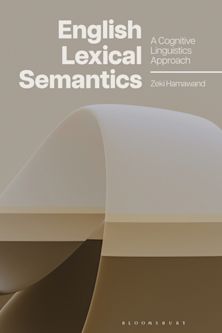- Home
- ACADEMIC
- Linguistics
- Semantics and Pragmatics
- Words and Meaning in Metasemantics
Words and Meaning in Metasemantics
Grounds for an Interactive Theory
Words and Meaning in Metasemantics
Grounds for an Interactive Theory
You must sign in to add this item to your wishlist. Please sign in or create an account
Description
In Words and Meaning in Metasemantics, Juan José Colomina-Almiñana puts forward a new way of understanding the linguistic and philosophical foundations of the study of language: the Interactive Theory. This theory states that the meaning of our sentences is much more than the truth values their components clauses carry. Since language is a human artifact, Words and Meaning in Metasemantics also explains the role that our reasons, dispositions, inferences, acts, and awareness have in the content-fixing of the sentences speakers employ to refer to the world in which they belong.
Table of Contents
Chapter 2: The Psychological Relevance of Propositional Content
Chapter 3: The Conventionality of Propositional Content
Chapter 4: The Interactive Theory
Chapter 5. Expanding the Interactive Theory
Chapter 6: Application 1: Tensed Sentences
Chapter 7: Application 2: Disagreements
Chapter 8: Application 3: Presupposition Projection
Product details
| Published | Apr 08 2024 |
|---|---|
| Format | Ebook (PDF) |
| Edition | 1st |
| Extent | 196 |
| ISBN | 9781978785403 |
| Imprint | Lexington Books |
| Publisher | Bloomsbury Publishing |
About the contributors
Reviews
-
Juan Colomina Almiñana’s book, Words and Meaning in Metasemantics: Grounds for an Interactive Theory, introduces a new theory of meaning in linguistic expressions: The Interactive Theory. According to this theory, the cognitive content of words and sentences depends on three essential elements: the speaker’s intentions, the audience’s uptake, and the linguistic conventions. This combination is novel and explains linguistic meaning and behavior better than other prevailing approaches. What is noteworthy in Colomina Almiñana’s approach is its commitment to the mutual influence of language, thought, and culture. This feature makes his theory more extensive and philosophically more interesting than conventional semantic theories.
Antti Hautamäki, professor emeritus, University of Jyväskylä
-
Juan José Colomina-Almiñana proposes an original ‘metasemantic’ view that combines a lucid and well-formulated account of the classical theories and controversies with a successful bid for a new ‘Interactive Theory,’ taking the problems out of the orbit of many linguistic and philosophical discussions and into the language use (or ‘languaging’) of human speakers in society. The book’s approach is thus essentially pragmatic in the modern sense, not just by its willful disregard of any formal-descriptive methods, with their basically set theory-bound visions, but also for its intelligent and often entertaining discussions of old chestnuts such as the ‘donkey anaphora,’ ‘compositionality,’ and ‘common ground,’ to name a few. I found the author’s take on these old, often somewhat stale topics invigorating and enlightening. Here, as elsewhere, Juan José Colomina-Almiñana shows his talent for an analysis which systematically combines new and classic views. This work is strongly recommended reading for anyone interested in an up-to-date view of the main problems in current philosophies of language, with a new approach to some of its worst conundrums.
Jacob L. Mey, professor emeritus, Southern Denmark University

ONLINE RESOURCES
Bloomsbury Collections
This book is available on Bloomsbury Collections where your library has access.
































